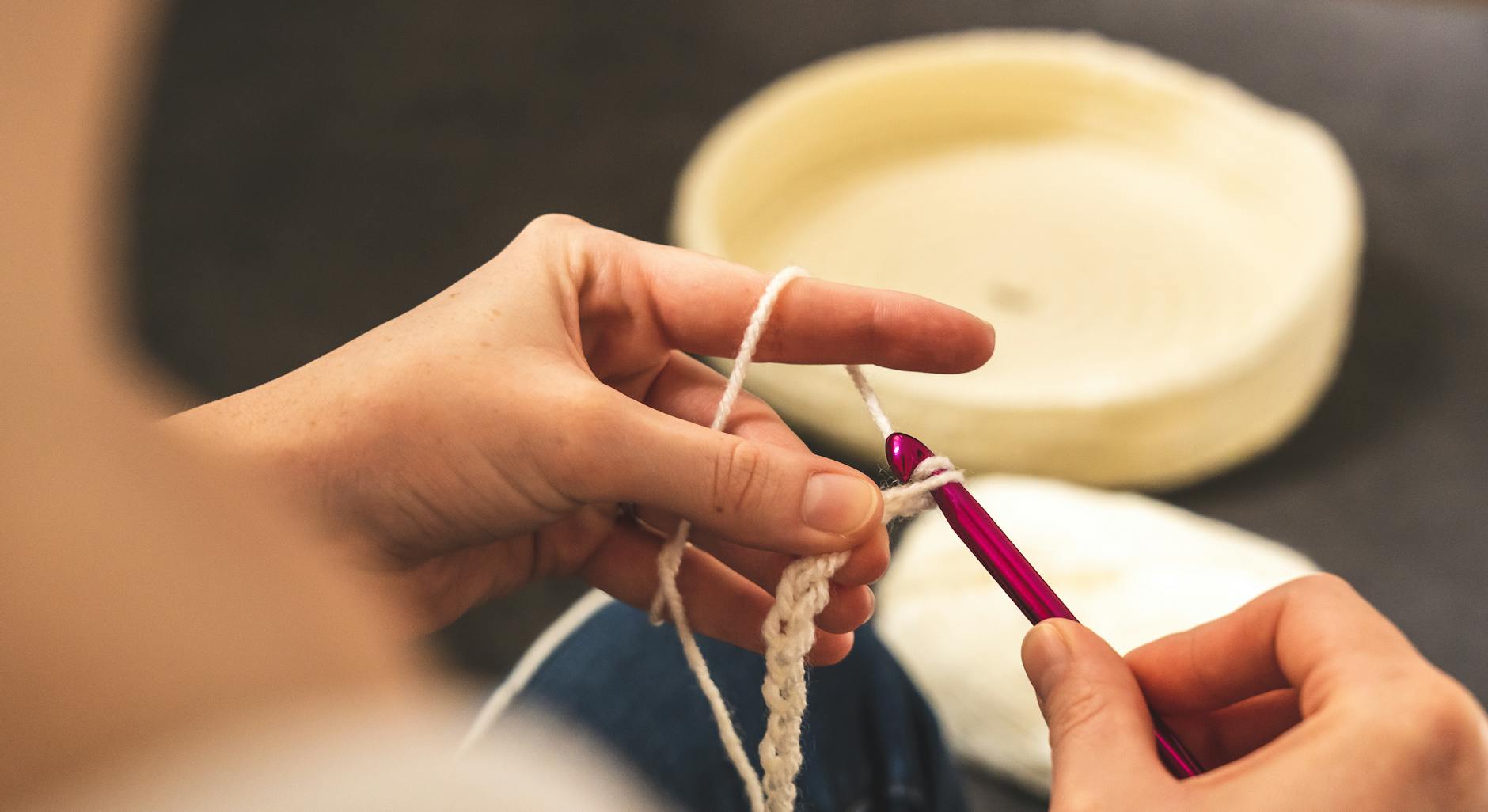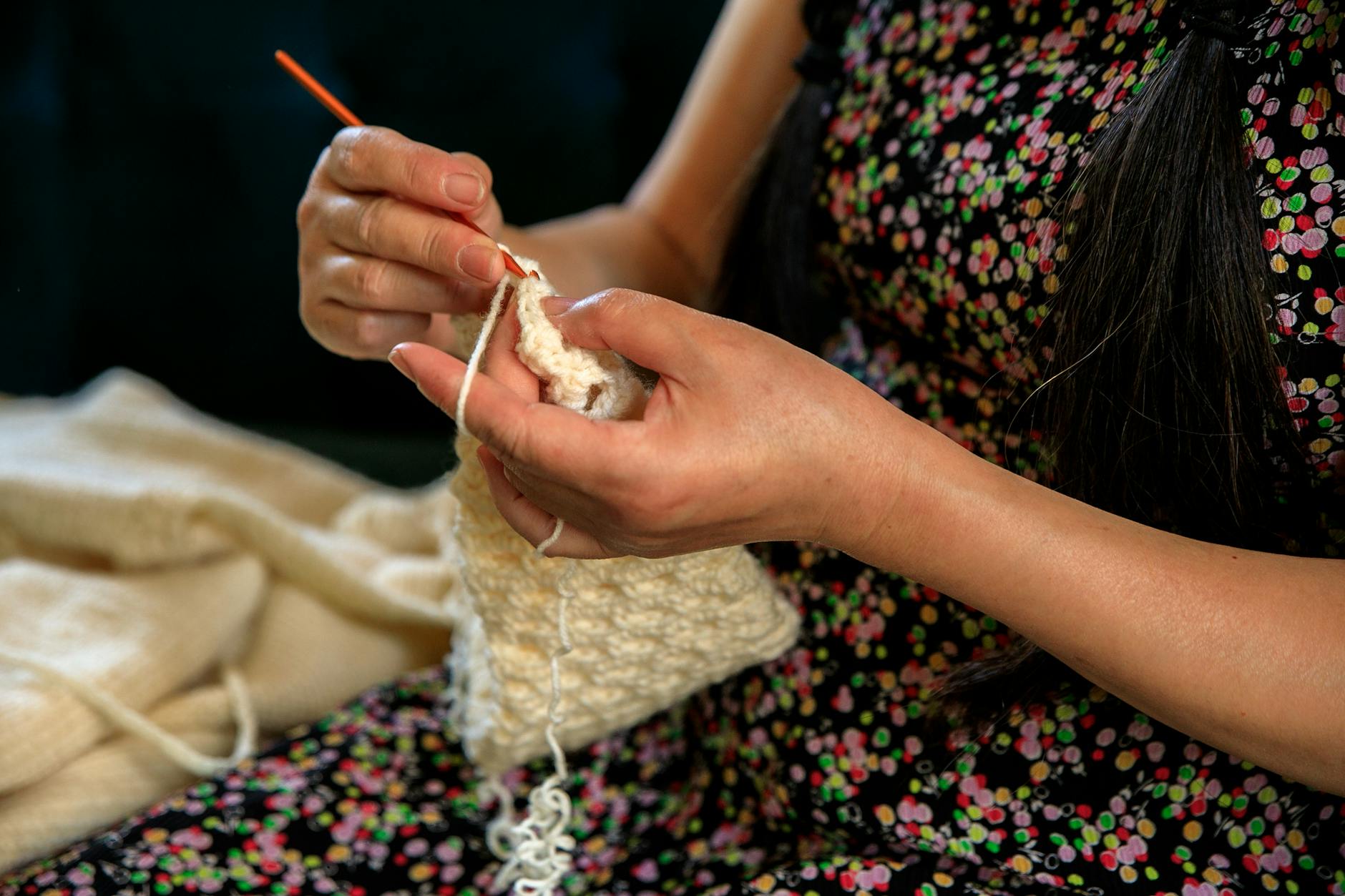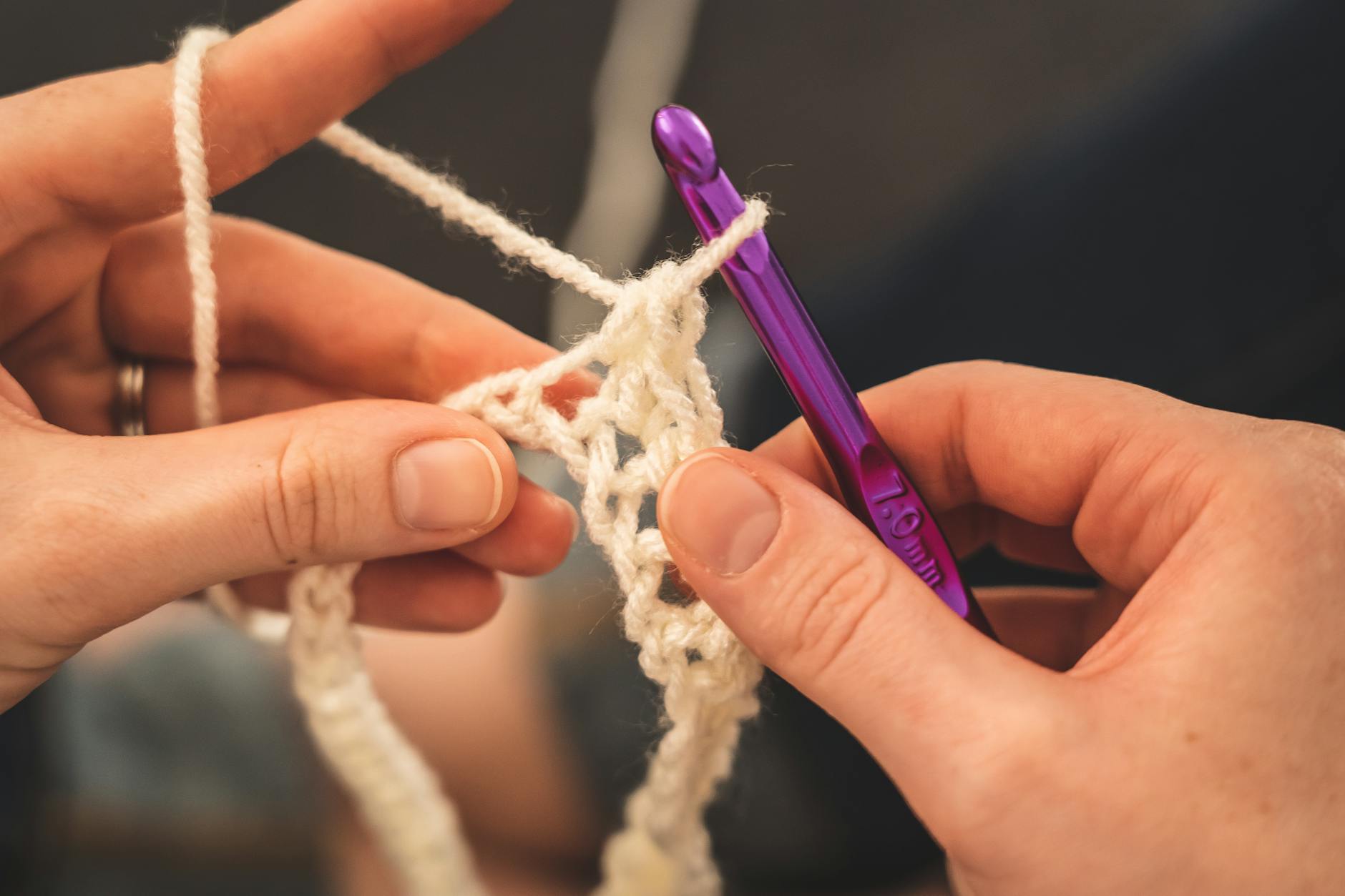
Easy Beginner Crochet Stitches You Should Master
When you're just starting with crochet, it can feel a little overwhelming. But don't worry—mastering a few beginner crochet techniques is all you need to get started. These foundational stitches, like the chain stitch or single crochet, are simple yet versatile. They open the door to creating scarves, blankets, and so much more. If you’re looking for a quick video to guide you hands-on, check out this helpful tutorial on five crochet stitches for beginners. It’s perfect for those looking to see the process in action. Let’s break down the stitches every beginner should know.
Understanding the Basics of Beginner Crochet
If you're new to crochet, it can feel like entering a whole new world. But with the right tools, some guidance on patterns, and plenty of patience, you’ll create pieces that look amazing and feel rewarding. Let's break it down step-by-step so you can jump into this relaxing craft without hesitation.
Essential Tools for Beginners
To begin crocheting, you'll need just a few essentials—no need to overcomplicate it. Here’s what I recommend having on hand:
- Crochet Hooks: Start with a medium-sized hook, like a 5mm or 6mm, which works well for beginners mastering basic stitches.
- Yarn: Opt for light-colored yarn, usually medium-weight (size 4). Avoid dark colors; they’re harder to see while stitching.
- Scissors: A small, sharp pair will make cutting yarn a breeze.
- Tapestry Needle: This helps you weave in loose yarn ends when you finish a project.
- Measuring Tape: Ideal for keeping your work to the intended size.
- Stitch Markers: These save you from losing track when working on rounds or counting stitches.
If you'd like more resources for beginner-friendly tools, check out The Woobles | Learn to crochet kits for beginners. They offer kits designed with newbies in mind!
An organized setup with these tools will simplify your learning process and make crocheting more enjoyable.

Photo by Castorly Stock
Reading Crochet Patterns
Reading crochet patterns can seem tricky at first, but once you get the basics down, they’re like a secret code you’ll learn to love.
Crochet patterns use abbreviations to save space and simplify instructions. Here's a quick example:
- Chain (ch): The foundational stitch in most projects.
- Single Crochet (sc): A basic stitch for creating dense fabrics.
- Double Crochet (dc): Taller than single crochet, used for looser stitches.
- Slip Stitch (sl st): A connecting stitch, often used to join rounds.
- Repeat [ ]: Instructions between brackets are repeated for the pattern.
For example, if you see:
ch 10, sc in each st across, turn
This means you chain 10, single crochet in each stitch, and then turn your work to start the next row.
Patterns also mention gauge—this helps ensure your project turns out the size you expect. If you’re wondering how to improve in reading patterns and starting them, Sarah Maker's guide to crochet for beginners provides valuable insights.
Feeling visual? Check out this fantastic playlist of crochet projects for absolute beginners. Sometimes seeing someone do it is all it takes for everything to click!
Basic Stitches Every Beginner Should Know
When you start your crochet journey, learning a few basic stitches is essential. These stitches lay the foundation for almost all crochet projects, whether you're working on cozy blankets or intricate patterns. Here’s how to master the most important beginner-friendly crochet stitches step by step.
Chain Stitch: The Foundation of Crochet
The chain stitch (ch) is where it all begins. Think of it as the backbone of any crochet project. Every piece, whether simple or elaborate, almost always starts with a chain. It’s essentially a series of loops linked together to form a foundation row.
To create a chain:
- Make a slip knot on your hook.
- Yarn over (wrap the yarn around the hook from back to front).
- Pull the loop through the slip knot.
- Repeat to form the desired number of chains.
One pro tip? Make your chain stitches loose and even—tight ones can make the foundation stiff and harder to work with.
Single Crochet: The Basic Building Block
The single crochet stitch (sc) is simple yet incredibly useful. It creates a tight, dense fabric perfect for pot holders, coasters, or even plush toys.
Here’s how you do it:
- Insert your hook into the second chain from the hook.
- Yarn over and pull up a loop (you now have 2 loops on your hook).
- Yarn over again and pull through both loops.
That’s it! You’ve completed a single crochet stitch. Practice across your chain to build muscle memory and consistency.

Photo by RDNE Stock project
Half Double Crochet: A Bit Taller and Versatile
The half double crochet stitch (hdc) is the next step up. It offers a balance between coverage and height. It’s great for scarves, sweaters, and afghans.
Follow these easy steps:
- Yarn over and insert your hook into the third chain from the hook.
- Yarn over again and pull up a loop (you now have 3 loops on your hook).
- Yarn over once more and pull through all three loops at once.
This stitch works up quickly and is a favorite for projects needing texture without too much bulk.
Double Crochet: Lightweight and Airy
The double crochet stitch (dc) is even taller, giving your projects an airy, textured feel. It’s a go-to stitch for lacy designs, shawls, or light blankets.
Here’s how:
- Yarn over and insert your hook into the fourth chain from the hook.
- Yarn over again and pull up a loop (you'll have 3 loops on your hook).
- Yarn over, pull through the first 2 loops on your hook (leaving 2 loops).
- Yarn over a final time and pull through the last 2 loops.
Double crochet stitches work up quickly, making them ideal for large projects like blankets.
If you want a quick reference for all these stitches, check out this detailed tutorial on how to crochet for beginners. Seeing the process in action can make things even clearer!
Treble Crochet: Longer and More Dramatic
The treble crochet (tr) is one of the tallest stitches you'll encounter as a beginner. It’s often used for creating intricate lace patterns or adding dramatic flair to borders.
To make a treble crochet:
- Yarn over twice before inserting your hook into the stitch.
- Yarn over and pull up a loop (you now have 4 loops on your hook).
- Yarn over and pull through the first 2 loops (leaving 3 loops).
- Yarn over again, pull through the next 2 loops (leaving 2 loops).
- Yarn over one more time and pull through the last 2 loops.
It takes a bit more practice, but the treble stitch unlocks exciting possibilities. For more insight into its application, explore basic crochet stitches for beginners for ideas on how to incorporate treble crochet into your projects.
By mastering these stitches, you’re laying a foundation for creativity that extends beyond the basics. Ready to start creating? Keep practicing these stitches, and soon your hands will move effortlessly through projects!
Exploring Additional Easy Stitches
Adding a variety of stitches to your crochet toolkit keeps things exciting while expanding your project possibilities. If you're ready to explore beyond the basics, these stitches offer both simplicity and beauty. Let’s break down a few beginner-friendly options that stand out.
Granny Square: A Beginner's Favorite

Photo by Castorly Stock
The granny square is iconic in the crochet world. Recognized for its versatility and colorful charm, it's a staple in beginner projects. Why is it so popular? It’s simple yet endlessly customizable. Whether you’re making afghans, pillows, or clothing, granny squares offer a creative outlet.
To make one:
- Start with a magic circle or chain 4 and slip stitch into a loop.
- Crochet clusters of double crochets, adding chain spaces to create corners.
- Repeat rows, expanding outward as the square grows.
It’s a great way to practice consistency and experiment with color changes. You can find lots of inspiration in this guide to unique crochet ideas.
Moss Stitch: Creating Subtle Texture
The moss stitch is perfect for those who love clean lines and subtle textures. Also known as the linen or granite stitch, this technique alternates single crochets and chain stitches. The result? A tight, flat fabric with a modern, minimalist look.
Why choose the moss stitch? It’s ideal for projects like dishcloths or shawls, where simplicity shines. Here's a quick rundown:
- Start with an even foundation chain.
- Alternate single crochet and chain stitches across the row.
- On the next row, work into the chain spaces, repeating the pattern.
This stitch is beginner-friendly and forgiving, so don’t worry too much about making mistakes. Another great resource to explore textures is these beginner-friendly projects.
Lemon Peel Stitch: A Balanced Blend
If you’re looking for something that’s both simple and visually striking, the lemon peel stitch might be just what you need. This stitch alternates single and double crochets, creating a slightly bumpy texture that’s both soft and sturdy. It’s wonderful for baby blankets, scarves, or even pillow covers.
Here’s how it works:
- Start with an even number of chains.
- Alternate single crochet and double crochet stitches across the row.
- On the next row, align the single crochets with double crochets and vice versa.
The uneven texture adds dimension, making your projects visually interesting without being complicated to create. For more design ideas, consider browsing this list of 30 simple crochet stitches.
These stitches show how even simple techniques can lead to stunning projects. By integrating these into your practice, you're setting the stage for creativity and growth in your crochet journey. Jump in and give them a try!
Tips for Practicing Crochet Stitches
Crochet might look intricate, but just like learning to bake or perfecting a dance step, practice is key. To truly master beginner crochet stitches, it helps to experiment with different approaches and techniques. Whether you're working solo or with others, practice makes every stitch smoother and more consistent. Let's explore some practical tips to elevate your crochet skills.
Practice with Different Yarns

Photo by Patricia Barrios Jaime
Switching up your yarns can transform how you crochet. Why stick to one type when there's a whole world of textures and weights to explore? Thick yarn works wonderfully for beginners, making stitches easier to see. As your confidence grows, try finer yarns for more intricate designs.
Here’s how experimenting with yarn can help:
- Chunky yarn: Great for fast and gratifying projects like scarves or blankets.
- Cotton yarn: Perfect for dishcloths or bags, offering a firm and smooth texture.
- Wool blends: Can stretch comfortably, making it forgiving for loose stitches.
Using different yarns not only helps you understand their behavior but also prepares you for diverse projects. If you're looking for beginner tips to optimize your results, check out Beginner Crochet Tips | Crochet.com.
Join a Crochet Group
Feeling stuck or need motivation? Crochet groups offer the perfect solution. Whether online or in person, they’re more than just a gathering; they're a treasure trove of resources and inspiration. Imagine sharing tips, showing off projects, or getting advice on that tricky pattern you’ve been avoiding.
Here are some perks of joining a crochet community:
- Shared learning: You’ll pick up tips from pros and newbies alike.
- Motivation: Seeing others’ progress can inspire you to keep practicing.
- Troubleshooting: Stuck with a problem? Group members often have clever solutions.
Social platforms like Reddit’s r/crochet or Facebook groups are buzzing with crochet enthusiasts. Check out this Reddit thread for advice from real beginners and seasoned crocheters alike.
With these tips, you’ll find your crochet practice not just productive, but also enjoyable and exciting. Experimenting with yarns and joining groups transforms the learning curve into a journey filled with creativity and community.
Resources for Learning More
Crochet is a skill best learned hands-on, with visual aids to guide you step by step. Watching others demonstrate techniques simplifies the process, as you can see how each stitch is formed and follow along at your own pace. Below are some of the most helpful resources for mastering beginner crochet skills.
Helpful Video Tutorials

Photo by Nataliya Vaitkevich
If you’re like me, learning visually makes all the difference, and luckily, there are tutorials on YouTube that break things down effortlessly. One of the best channels for beginners is Secret Yarnery, which offers clear instructions for absolute beginners. Their playlists are structured in bite-sized tutorials, making it simple to tackle crochet one step at a time.
Here’s a quick highlight of what to expect:
- Walkthroughs for beginner stitches like single and double crochet.
- Tutorials that help you start easy projects—think scarves or small blankets.
- Instructions for transitioning between stitches and finishing your work.
For an additional resource, check out this step-by-step guide for beginners. It’s a wonderful breakdown of crochet essentials, including materials you’ll need and how to work your first row. These approachable videos make it easy to pause or rewind if something doesn’t click, and they ensure you build confidence as you go.
Plus, if you're looking for a broader selection of tutorials, the Joy of Motion Crochet library has 175+ free crochet tutorials with detailed instructions and visual aids to guide you through every phase. Whether you’re working on your first project or exploring new stitches, there’s something for everyone.
By exploring these resources, you’ll set yourself up with a strong foundation, and more importantly, you’ll enjoy the learning process.
Conclusion
Learning beginner crochet stitches is a rewarding step into a creative hobby. These easy techniques empower you to bring your ideas to life, whether it’s a cozy blanket or a stylish scarf.
The key to improving is consistency. Pick up your hook daily—even just 10 minutes can enhance your skills. Watching video tutorials like those recommended at Secret Yarnery's YouTube channel makes learning even easier.
Crochet is a journey of patience and imagination. As you master these stitches, you’ll find endless possibilities for projects. So grab your supplies and start stitching—each loop is a step closer to your next masterpiece!
Frequently Asked Questions (FAQ)
1. What is the easiest crochet stitch for beginners?
The chain stitch (ch) is the easiest. It's the foundation for most projects and helps you get used to handling the hook and yarn. After that, the single crochet (sc) is usually the next step.
2. What tools should I buy to start crocheting?
You'll need a medium-sized crochet hook (5mm or 6mm), light-colored medium-weight yarn, scissors, a tapestry needle, a measuring tape, and stitch markers. These basics set you up for success.
3. Can I learn crochet without a teacher?
Yes! With online tutorials, step-by-step blog guides, and practice, you can learn crochet by yourself. Platforms like YouTube are perfect for watching demonstrations.
4. How long does it take to learn crochet?
It depends on your practice. Most people can learn basic stitches in a few hours. With consistent effort, you can complete simple projects within a few weeks.
5. What type of yarn should I use as a beginner?
Choose a light-colored, medium-weight yarn (size 4). Avoid dark colors since they’re harder to see and work with. Acrylic yarn is also budget-friendly and beginner-friendly.
6. Why are my stitches either too tight or too loose?
This is common for beginners. Focus on maintaining even tension as you practice. Holding the yarn properly and relaxing your grip can help.
7. What’s the best first crochet project for beginners?
Start with simple projects like dishcloths, coasters, or a basic scarf. These require few stitches and let you practice consistency without too much pressure.
8. How can I fix mistakes in my crochet work?
Use your hook to pull stitches out slowly until you reach the mistake. Once corrected, continue stitching. Mistakes are part of learning!
9. Can left-handed people crochet?
Absolutely! Left-handed crocheters can mirror right-handed tutorials or find left-handed demonstrations online. Many resources cater to left-handers.
10. How do I read a crochet pattern as a beginner?
Focus on learning common abbreviations like ch (chain), sc (single crochet), and dc (double crochet). Patterns often have a glossary explaining the terms.

About the Author
Christa Patel is a passionate crochet designer and educator with over a decade of experience in fiber arts. She specializes in creating beginner-friendly tutorials and patterns that empower new crafters to confidently embark on their crochet journey. Known for her clear instructions and approachable teaching style, Christa has helped countless learners transform their creative aspirations into rewarding, finished projects.
Beyond her love for crochet, she shares her expertise through workshops, online courses, and engaging blog content. Christa believes in the therapeutic power of crochet and encourages everyone to find joy in the process of learning and creating. When she’s not crafting, you’ll find her exploring yarn shops or designing her next project with her ever-growing collection of colorful skeins.
Christa’s work has been featured on reputable platforms in the crochet community, and she’s a trusted resource for beginners seeking practical advice and inspiration. Follow her insights as she makes crochet accessible, fun, and endlessly creative!

